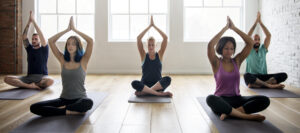Easy Pose or Sukhasana from the Sanskrit word ‘Sukha’ meaning ‘Pleasure’ and 'Asana' means 'Pose', is a beginner-level restorative and meditative pose. Easy Pose is done with the crossing of the legs in the simplest form, unlike other meditative poses. This posture is excellent for meditation, and pranayama. It also works well to bring the mind and breath under control at the beginning or at the end of a yoga class. Sukhasana is considered a base pose as Easy Pose variations can be derived from this pose. It's a warm-up yoga pose to prepare the body for more intense yoga poses or flows.
Yoga For Anxiety And Stress
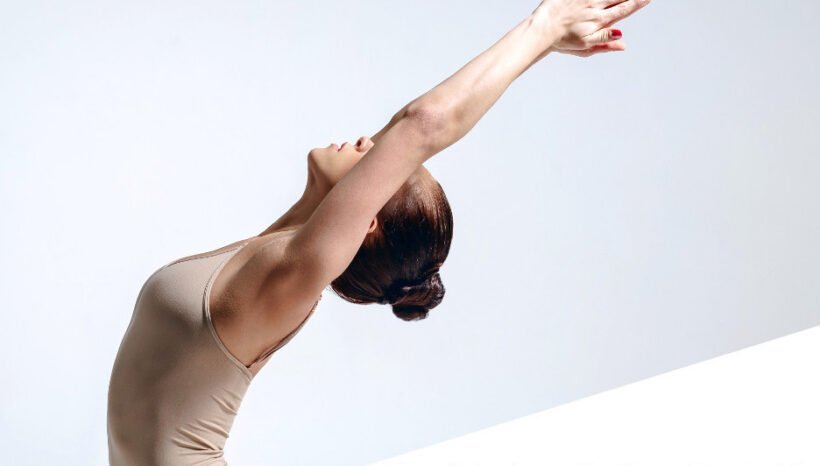
If panic, fear, and that feeling of unease in your stomach due to anxiety and stress are disturbing your everyday life, you probably need help overcoming it. Some people manage to do that by themselves with a little help from Google, and others need medical help. It is only natural to notice the fear of the unknown striving through your body, but if it becomes an obstacle in managing your daily tasks, try looking for yoga for stress and anxiety class.
Is yoga good for anxiety and stress?
Over the past decades, yoga has become very popular in relieving stress and overcoming symptoms of anxiety disorder. There are many benefits to practicing yoga. It not only acts as a natural stress reliever, but studies have shown it can also reduce symptoms of anxiety and depression and many practitioners recommend using yoga for reducing stress and anxiety.
With so many different yoga styles, it is hard to choose which one to practice. Depending on your preference, you can practice Hatha Yoga, which is considered to be the best choice for beginners as it is slow-paced and relatively easy to do. On the other hand, there is Vinyasa if you want to get in shape and sweat during the practice.
Benefits Of Yoga For Stress And Anxiety
- Yoga gives you a feeling of relaxation. When we feel anxious, it’s usually due to accumulated tension in our muscles, which is produced by that constant worry or fear we feel. During a yoga practice, we release the muscle tension and start to relax – ultimately, eliminating the symptoms of anxiety, stress, and depression. Stretching exercises, such as those promoted in yoga, help us identify the underlying physical problem, eventually making it go away.
- Yoga teaches us to breathe. When we’re anxious, we tend to breathe rapidly, vigorously trying to catch our shallow breath, which might increase our heart rate and, ultimately, our blood pressure. Our fight-or-flight system turns on, and we start having that uncomfortable feeling in our gut. Yoga is a bond between our physical and non-physical, between our body and mind – it helps unite the two. Breathing techniques yoga teaches us to be aware of every breath and helps us cope with disturbing situations by focusing only on the breath.
- Yoga promotes acceptance. Sometimes we want to run away when we feel anxious. Knowing our triggers can help us recognize situations causing the discomfort, and while it might feel frightening to face the monster, often, doctors suggest you do it. Yoga promotes acceptance in a way that you just let the feeling come and leave as it pleases.
Yoga Poses For Stress And Anxiety
Plenty of yoga poses are proven to alleviate the symptoms of stress and anxiety. Some are a bit better than the others for that purpose. These are the best yoga poses for stress and anxiety:
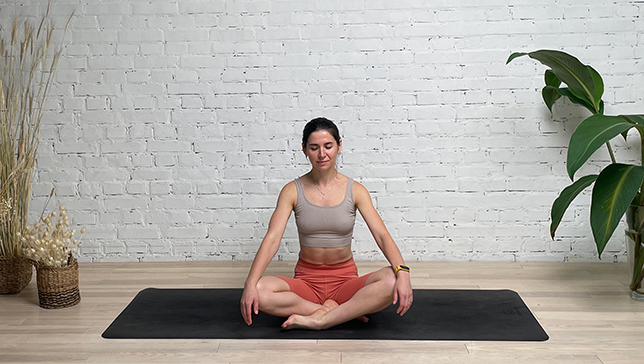
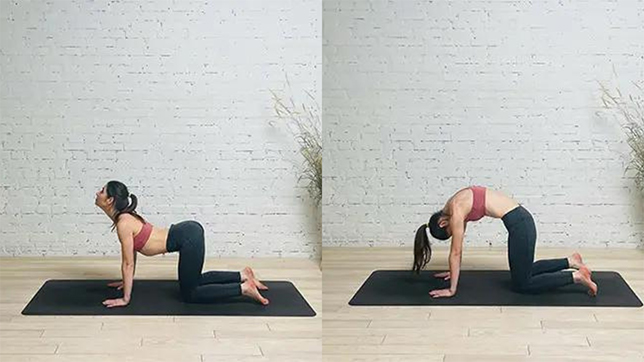
Cat-Cow Pose or Marjaryasana-Bitilasana in Sanskrit ( ‘marjari’ meaning ‘cat’, ‘bitila’ meaning ‘cow’, and 'asana' means 'pose') is a combination of two poses practiced together to gently warm up the spine and the abdomen for more challenging postures or is sometimes also practiced as a simple restorative pose. Coming on all fours, gently moving the back in a rhythmic way, and taking the position like that of a cat or a cow, releases the tensions around the spine and shoulders and tightens the abdomen to make a stronger core. Cat Cow Pose is considered a base pose as Cat-Cow Pose variations can be derived from this pose. Cat-Cow Pose helps boost energy in the body and hence can be included in different yoga sequences. Cat-Cow Pose is considered a warm-up yoga pose to prepare the body for more intense yoga poses or flows.
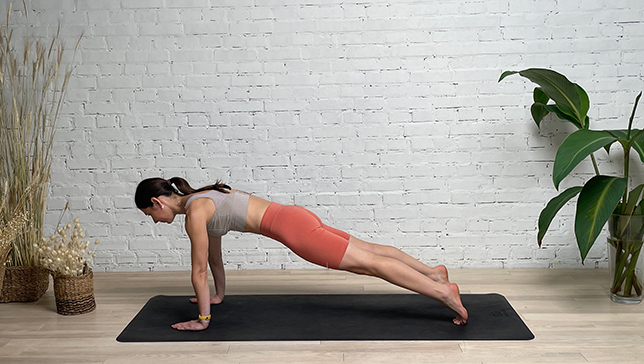
In Plank Pose or Phalakasana in Sanskrit, as the name suggests, the body is held in a way that looks like a plank, thin and long. In Plank Pose the emphasis is on the core muscles and shoulders strength. This pose essentially works for someone who wants to take the arms and shoulder strength to the next level in order to do more difficult arm balancing yoga poses.
Plank Pose is considered a base pose as plank pose variations can be derived from this pose. This pose helps boost energy in the body and hence can be included in flow yoga sequences.
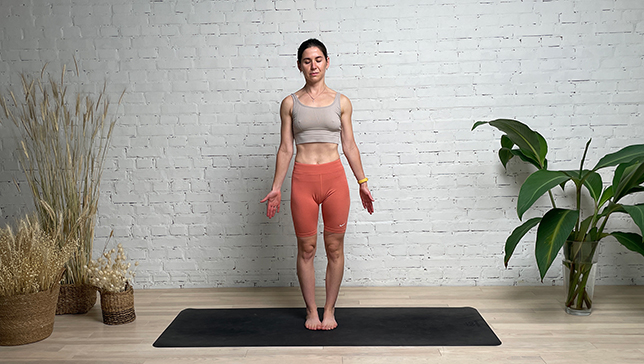
Mountain Pose or Tadasana in Sanskrit (‘Tada’ = mountain, ‘Sama’ = Upright or straight, and ‘Sthiti’ = standing still), implies a pose where one stands firm and erect as a mountain. Tadasana or Mountain Pose is considered as a basic standing pose or the foundation pose for any other yoga pose (asana). E.g., Sun Salutation series starts and ends with Tadasana or otherwise called Samasthiti. Mastery of this asana with the firmness of the feet, toes, shoulders, and chest will benefit the practice of all other yoga poses.
Mountain Pose is considered a warm-up yoga pose to prepare the body for more intense yoga poses or yoga flows.
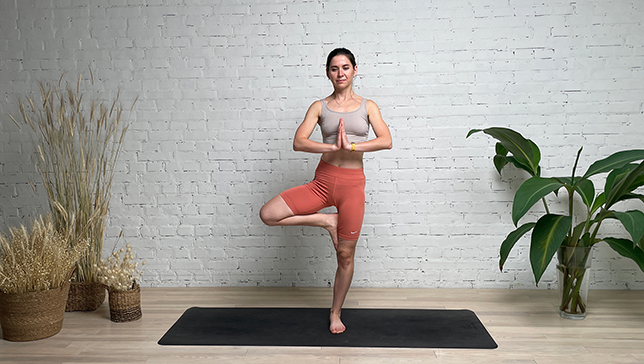
Tree Pose or Vrksasana in Sanskrit ('Vrksa' means 'Tree' and 'asana' means 'pose') is a yoga posture that strengthens the legs, improves balance, and cultivates mindfulness. The very name suggests the body in the final pose should look like a tree. A tree stands tall, strong, and straight. Thus, while practicing Vrksasana focus on keeping your standing leg strong and stable, rooting down through your foot and engaging your thigh muscles. You can also experiment with different arm positions, such as reaching your arms out to the sides or bringing them down to your sides for more support. Remember to breathe deeply and stay present in the pose, allowing yourself to feel grounded and rooted like a tree.
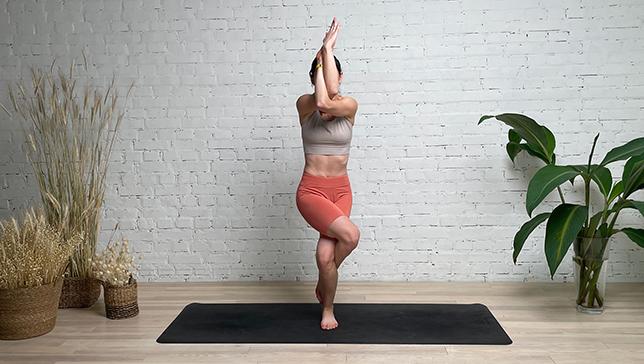
Eagle Pose or Garudasana in Sanskrit (‘garuda’ = ‘eagle’ and ‘asana’ = ‘posture’) is a standing balancing pose that involves wrapping one leg around the other and crossing the arms in front of the body. Garuda is known as the king of the birds. Garudasana can help improve balance and coordination, stretch the shoulders and upper back, and tone the legs and glutes. It can also help calm the mind and improve focus.
Eagle Pose is considered a base pose as eagle pose variations can be derived from this pose. Eagle Pose helps boost energy in the body and hence can be included in different yoga sequences.
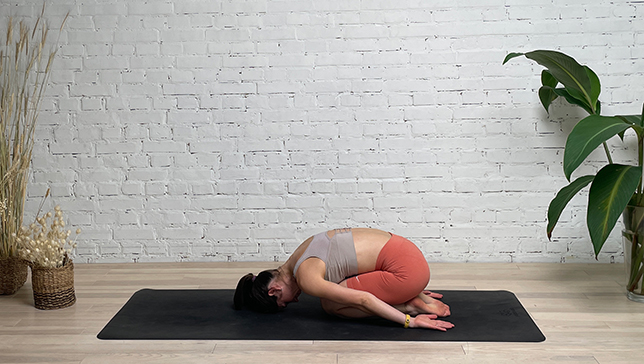
Child’s Pose in Sanskrit (‘Bala’, means ‘child’, 'asana' means 'pose'). Balasana or Child’s Pose is generally practiced at the end of an intense yoga sequence where the connection of the breath and the movement of the body would have been lost. The practice of Balasana concluding such a sequence, allows one to come to peace with the body with the connection of the breath. No doubt all yoga poses should lead to the connection of the breath and the body, but certain poses are challenging where the chest and the abdomen are compressed or pulled, creating uneasiness with the breathing. With Balasana, the spine remains relaxed in a forward fold and forces one to focus on breathing with the compressing of the abdomen and the chest towards the tummy. On the other hand, Balasana can be used purely as a restorative pose to heal patients with severe backaches, and insomnia, treat blood pressure, or just simply bring stress levels down. Child Pose is considered a base pose as child pose variations can be derived from this pose. Child Pose helps boost energy in the body and hence can be included in different yoga sequences. Child Pose is considered a warm-up and restorative yoga pose to prepare or restore the body before or after more intense yoga poses.
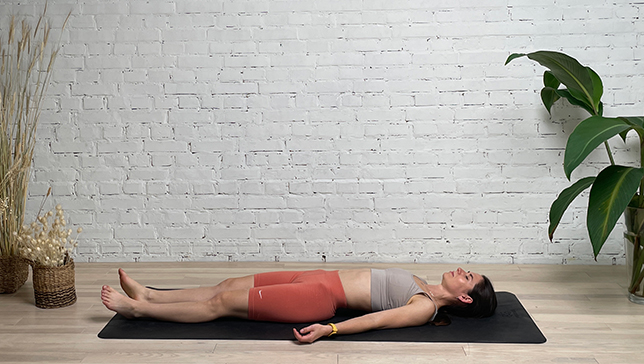
Verse 32 of the first chapter of the Hatha Yoga Pradipika states: ‘Lying upon one’s back on the ground at the full length like a corpse is called Savasana. This removes the fatigue caused by the other yoga poses and induces calmness of mind’. In Sanskrit ‘Sava’ means 'corpse' and 'asana' means 'pose' thus the name of the pose in English is Corpse Pose.
In Corpse Yoga Pose, the objective is to imitate a corpse by keeping the body still. By remaining motionless for some time and keeping the mind still while you are fully conscious, you learn to relax. This conscious relaxation invigorates and refreshes both body and mind.
This apparently easy posture is one of the most difficult to master, irrespective of the level of yoga practice or body flexibility.
